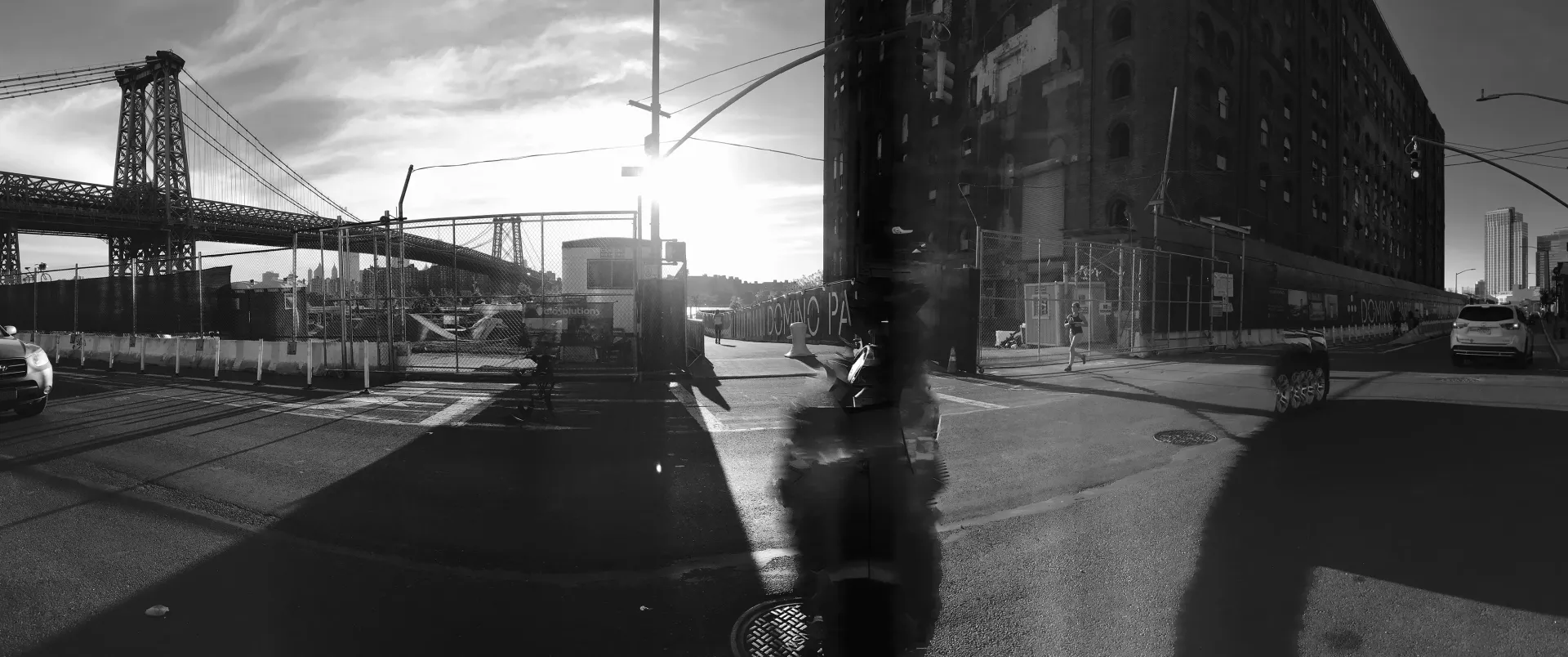About PanoBlurs
This series of panoramic blurs is an exploration of the photographic equivalent of the Doppler effect. When the iPhone is in Panorama mode, it is necessary to move the camera in a panning motion while capturing a scene. If an object within the frame moves in the same direction as the iPhone during the scan, that object will tend to become stretched in the same plane of movement. Conversely, if an object moves in the opposite direction it will tend to become scrunched, squeezed, and sometimes if it is moving fast enough, the camera will not record it at all and the object will disappear into the photo ether.
When I first started making panoramas, I thought this was a serious shortcoming, even a failing, of the technology. I tried my best to avoid scenes with fast moving objects such as cars, people walking, running, or biking. Now that I better understand how panorama mode works, I've come to embrace this constraint. Traditional motion blur or shutter blur has been a limitation of photography from the very beginning. It's better to work with it rather than avoid it. So with a sense of play and adventure, I've been experimenting with making "panoblurs" on purpose to see what unexpected results I might create. When I make one that is successful, it's like a gifts from the Photo Gods. It's a wonderful revelation because it reminds me to be grateful for the unexpected and to accept what I can not control . Sometimes, recognition is all the photographer needs or gets in order to see that a picture is successful. As with any technique it may become hackneyed or cliched if it is overused. So this is a small selection of my most effective panoblurs. I hope you get a kick out of the stretches, scrunches, and wisps.
PanoBlurs














